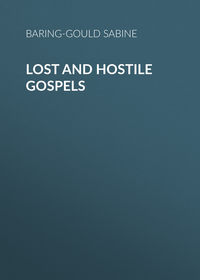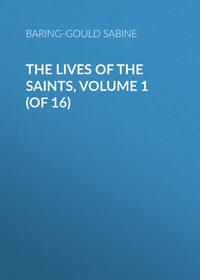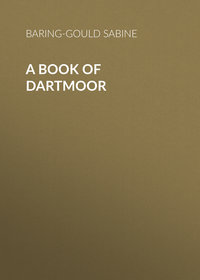
Cornish Characters and Strange Events
Theodore Paleologus married Mary Balls in 1615, and by her had three sons, Theodore, John, and Ferdinando, and two daughters.
Theodore was a lieutenant in the Parliamentary army in 1642, under Lord St. John, and was buried in Westminster Abbey in 1644.
There are no traces to be found of John and Ferdinando. Mary, one of the daughters of Theodore and Mary Balls, died unmarried, and was buried at Landulph in 1674. Her sister Dorothy married, in 1656, William Arundell, and died in 1681, he in 1684.
There was a Theodore Paleologus who died at sea on board the Charles II under Captain Gibson, in 1693. In his will Theodore mentions only his wife Martha, and we do not know who was his father.
We do not know who was the William Arundell whom Dorothy Paleologus married. Unhappily the registers of S. Dominic, where she and her husband lived, have been lost, and we cannot say whether the Mary Arundell who married a Francis Lee soon after the death of her presumed parents was a daughter. But if so, as Dr. Jago suggests in a paper in the Archæologia, "The imperial blood perhaps still flows in the bargemen of Cargreen."
1
The letter is given in Household Words, 1852, p. 234.
2
Froude, Hist. of England, X, p. 410.
3
Ibid., XI, 471-2.
4
We have only Peters' own word for this sum. It was probably much less.
5
Vita, J. Barwick, London, 1721.
6
Stubbe, Justification of the War, 1673, pt. ii. p. 83.
7
Whitfeld, Plymouth and Devonport in War and Peace, Plymouth, 1900.
8
Morning Leader, 29th October, 1902.
9
There is an engraving of it in the Annual Report of the Society of Arts for 1821. The life-preserving rocket was exhibited on the Serpentine before the Duke of Clarence, afterwards King William IV, on May 28th, 1819. People looked on as at some firework display, and nothing came of it.
10
Trengrouse's apparatus fitted into a case 4 ft. 3 in. long by 1 ft. 6 in. wide.
11
The cup is still in the possession of the Corporation of Penryn. It is of silver, will hold about three quarts, and is inscribed: "From Mayor to Mayor of the town of Penryn, where they received me in great misery. Jane Killygrew, 1613."
12
The hole is still shown in the Tree Inn, Stratton.
13
Smiles (S.), Lives of the Engineers, Vol. III, p. 100. London, 1862.
14
Deanery of Trigg Minor, I, p. 301.
15
At S. Breward the bells were cast in a small garden outside the churchyard fence, since called "Bell garden."
16
Afterwards Sir George Cocks, k. c.b., who lost an arm at Waterloo.
17
Baptized S. Mary's, Truro, Jan. 27th, 1720-1.
18
The earl died on November 5th, 1701.
19
History of the Reign of Queen Anne, Vol. XII, pp. 305-6 (1713).
20
Familiar Letters, ed. 1678, p. 233.
21
Familiar Letters, p. 239. It is wrongly dated, June, 1634, in place of 1636. The dates to the letters were in many cases arbitrarily assigned by the publisher.
22
Now by Carew Davies Gilbert, Esq., of Trelisseck.
23
It came to her by bequest of her godmother, Mrs. Elizabeth Noles, who had acquired a fortune by business at Chiandower.
24
Created Baronet 3rd May, 1774.
25
Samuel Drew says at the age of five, but this was a slip of his pen or a mistake of the printer; his mother died in 1774.
26
John Rivers and James Howes were sheriffs.
27
See for the above and more on the subject of "Pirate Trelawny" an article by T. C. Down in the Nineteenth Century, May, 1907.
28
The Old Playgoer, 1854, pp. 82-4.
29
J. B. Cornish in the Cornish Magazine, 1898, p. 121.
30
The Company levied a duty of half a dollar upon all ships anchoring in the harbour, one rupee a year on each fishing-boat, and the same on every ship. Lastly, with what seems unparalleled meanness, they ordered that only half of the native labourers' wages should be paid in coin, the other half in rice valued "at the Company's price," which would give ten per cent clear profit after all expenses had been defrayed.
31
Baptized at Probus 29th May, 1758.
32
Authorities for his life: Ormsby, The Household Books of Lord William Howard, Surtees Soc., 1878, pp. 506 et seq.; Gildew's Biographical Dictionary of English Catholics; Jesuits in Conflict, 1873, p. 206; the Douay Diaries, ed. Knox; Boase and Courtney's Bibliographia Cornubiensis; Notes and Queries, 5th series, IV, 402-4 (1875); Morris, Troubles of our Catholic Forefathers, 1st series, 1872, p. 95, 2nd series, 1875, pp. 33, 79-80; Challoner's Memoirs of Missionary Priests, p. 32; Dict. of National Biography, State Papers, etc.; an admirable and exhaustive Life in MS. by Rev. E. Nolan, Trinity College, Cambridge, in the University Library, Cambridge.
33
A corner of the letter is torn off, but it is easy to supply the missing portions of the words and sentences.
34
He calls Daubuz a Jew. The first Daubuz to settle at Truro was a Moses. But the family claims Huguenot extraction.
35
The murderer was William Kilter, priest of S. Keverne, and he killed William Body, the lessee of the archdeaconry of Cornwall, in Helston Church as he was engaged in smashing the images, 5th April, 1548. For this he was hanged, drawn, and quartered, 7th July, 1548.
36
No such a vicar was in Gluvias or is known to have been in Cornwall in the sixteenth and early seventeenth centuries.
37
The History of the Reign of Queen Anne, 1708, p. 242.
38
Cooke (J. H.), The Shipwreck of Sir Cloudesley Shovell, Gloucester, 1883. For the account of the confession of the woman he refers to an original letter of the second Lord Romney to Captain Locker, now in the possession of the Earl of Romney.
39
Her mother was married three times – first to Warring, second to Vosper, third to Geo. Buckingham.
40
Od. I, 1; II, 20.
41
These were Lord Lyttleton, G. Dawson, and C. Bray.









